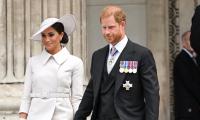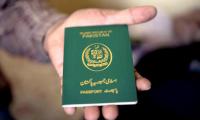LAHORE:At the National History Museum here, The Citizens Archives of Pakistan held a viewing of “Child of Empire”, a virtual reality experience by Project Dastaan, of the largest forced migration in human history.
Child of Empire is an award-winning, immersive film experience about the partition of India through the lens of two survivors, Iqbal-ud-Din Ahmad voiced by Salman Shahid and Ishar Das Arora voiced by Adil Husain. They shared a childhood but Iqbal, a Muslim, migrated to Pakistan. He lost family members while migrating. Now based in London, the two friends recalled their childhood while playing a board game. The film started from how the British divided the subcontinent, assigning it to an officer who was unaware of the territory and the division was done in hardly six weeks.
The emotions the film evokes are overwhelming. The immersive 3D experience generates empathy. The viewers wear a gadget that covers their eyes and ears. It is like gearing up for a journey. The film takes the viewer everywhere with it. This is different from the regular cinema experience. While we look straight at the screen when in a cinema, here there is this strong feeling of travelling with the characters, at times moving past them, a strong feeling of being transported to where all the film is taking place. The film successfully conveys the magnitude of the mass migration, loss of lives and the sacrifices of the people.
Saadia Gardezi, co-founder of Project Dastaan which is based in London, in a Q/A session after the viewing, said the film helps rethink story-telling. “We interviewed actual people. It’s a peace-building initiative. People don’t know much about partition and the people of South Asia. The largest human migration should be part of the world history but it is not,” she said.
Salman Shahid, the veteran actor who lent his voice to the film, said he had worked with Adil Hussain in India in film Ishqia. The whole experience was very nice, he said. Project Dastaan also showed how they helped Khalid Bashir Rai who had migrated from Kasba Bhural and could not reach his village. The team went to his village and filmed the place and the people there and showed it to him. Someone from the audience rightly said, “They are connecting younger generation to the past.”
A number of people had come to watch the film and attended the session with Sadia Gardezi. Among them were teachers, artists, students, journalists and children and they were all thrilled by the immersive film experience.
The exhibition will remain on till Dec 3 at National History Museum in Greater Iqbal Park. Museum will be open on Tuesday-Sunday from 10am to 6pm and the last entry to the museum will be entertained at 4:30pm. Museum will remain closed on Mondays for maintenance.
Representation image of WiFi logo on a smartphone. — Freepik/FileLAHORE : Punjab Safe Cities Authority has expanded...
A motorcyclist and a pillion rider protect themselves with an umbrella during heavy rain in Lahore. —...
Lahore Commissioner Zaid bin Maqsood gestures during a meeting on May 4, 2024. — Facebook/Commissioner...
In this image, a lady Doctor examines a child in a medical camp. — APP/FileA one-day medical camp was organised at...
Inspector General of Police Punjab Dr Usman Anwar addresses an event on January 5, 2024. — Facebook/Punjab Police...
Actors perform a scene during the play “Bulha” at Alhamra Hall 2 on May 3, 2024. — Facebook/Ajoka Theatre...







